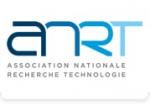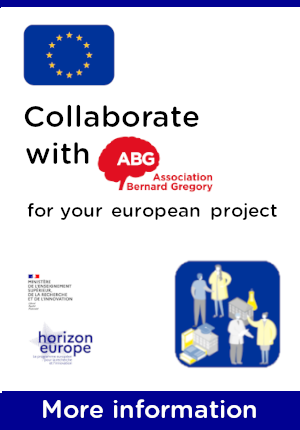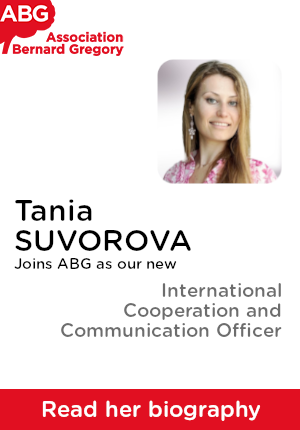Limites de sensibilités au sein des systèmes nano-optomécaniques // Limits of Sensitivity in nano-optomchanics
|
ABG-134168
ADUM-67963 |
Sujet de Thèse | |
| 04/11/2025 | Autre financement public |
Université Paris-Saclay GS Physique
Gif-Sur-Yvette Cedex - Ile-de-France - France
Limites de sensibilités au sein des systèmes nano-optomécaniques // Limits of Sensitivity in nano-optomchanics
- Physique
Optomécanique, Nano-optique, Information de Fisher, Optomécanique multimode, Optomécanique matricielle, Façonnage de fronts d'ondes
Optomechanics, Nano-optics, Fisher Information, Multimode Optomechanics, Matrix Optomechanics, Wavefront Shaping
Optomechanics, Nano-optics, Fisher Information, Multimode Optomechanics, Matrix Optomechanics, Wavefront Shaping
Description du sujet
L'optomécanique est le domaine consacré à l'étude des interactions réciproques entre des degrés de liberté optiques et mécaniques. Apparu au milieu des années 90, le développement de ce domaine a connu une accélération importante au tournant des années 2010, avec l'apparition des systèmes nano-optomécaniques, qui couplent des résonateurs mécaniques de dimensions nanométriques à des états de lumière non-conventionnels de très faible volume spatial. Cette approche a permis d'obtenir une exaltation de massive du couplage optomécanique, ce qui a conduit à des réalisation très importantes telles que le refroidissement laser d'un degré de liberté mécanique macroscopique, et la mise en évidence des fluctuations quantiques de l'action en retour. Cependant, les conditions de fonctionnement de ces dispositifs s'éloignent fortement de celles du concept de cavité optomécanique linéaire, d'après lequel le domaine s'est développé, avec l'hypothèse d'une détection opérant de manière optimale, c'est-à-dire à la limite de Cramér-Rao.
Ce projet propose d'étudier expérimentalement les limites de sensibilité dans les mesures optomécaniques, dans un cadre généralisé, au-delà de l'interaction optique unitaire supposée dans le contexte initial du domaine de l'optomécanique. Plus spécifiquement, ce travail propose de se concentrer sur la démonstration de l'optimisation des mesures nano-optomécaniques, basées sur l'optimisation de la mesure par façonnage de front d'onde. Nous visons des démonstrations sur des degrés de liberté allant jusqu'au MHz, limitées par le bruit quantique de la sonde optique. Nous prévoyons également d'étudier le rôle des forces d'action en retour, afin de déterminer les conditions optimales d'opération généralisées.
------------------------------------------------------------------------------------------------------------------------------------------------------------------------
------------------------------------------------------------------------------------------------------------------------------------------------------------------------
Optomechanics is the field dedicated to the study of reciprocal interactions between optical and mechanical degrees of freedom. Emerging in the mid-1990s, the development of this field accelerated significantly in the early 2010s with the emergence of nano-optomechanical systems, which couple nanoscale mechanical resonators to unconventional light states of very small spatial volume. This approach has enabled massive enhancement of optomechanical coupling, leading to significant achievements such as laser cooling of a macroscopic mechanical degree of freedom and the discovery of quantum fluctuations in feedback. However, the operating conditions of these devices differ greatly from those of the linear optomechanical cavity concept, upon which the field was developed, with the assumption of optimal detection, i.e., at the Cramér-Rao limit.
This project proposes to experimentally study the sensitivity limits in optomechanical measurements, in a generalized framework, beyond the unitary optical interaction assumed in the initial context of the field of optomechanics. More specifically, this work proposes to focus on demonstrating the optimization of nano-optomechanical measurements, based on the optimization of the measurement by wavefront shaping. We aim at demonstrations on degrees of freedom up to MHz, limited by the quantum noise of the optical probe. We also plan to study the role of back-action forces, in order to determine the generalized optimal operating conditions.
------------------------------------------------------------------------------------------------------------------------------------------------------------------------
------------------------------------------------------------------------------------------------------------------------------------------------------------------------
Début de la thèse : 01/01/2026
Ce projet propose d'étudier expérimentalement les limites de sensibilité dans les mesures optomécaniques, dans un cadre généralisé, au-delà de l'interaction optique unitaire supposée dans le contexte initial du domaine de l'optomécanique. Plus spécifiquement, ce travail propose de se concentrer sur la démonstration de l'optimisation des mesures nano-optomécaniques, basées sur l'optimisation de la mesure par façonnage de front d'onde. Nous visons des démonstrations sur des degrés de liberté allant jusqu'au MHz, limitées par le bruit quantique de la sonde optique. Nous prévoyons également d'étudier le rôle des forces d'action en retour, afin de déterminer les conditions optimales d'opération généralisées.
------------------------------------------------------------------------------------------------------------------------------------------------------------------------
------------------------------------------------------------------------------------------------------------------------------------------------------------------------
Optomechanics is the field dedicated to the study of reciprocal interactions between optical and mechanical degrees of freedom. Emerging in the mid-1990s, the development of this field accelerated significantly in the early 2010s with the emergence of nano-optomechanical systems, which couple nanoscale mechanical resonators to unconventional light states of very small spatial volume. This approach has enabled massive enhancement of optomechanical coupling, leading to significant achievements such as laser cooling of a macroscopic mechanical degree of freedom and the discovery of quantum fluctuations in feedback. However, the operating conditions of these devices differ greatly from those of the linear optomechanical cavity concept, upon which the field was developed, with the assumption of optimal detection, i.e., at the Cramér-Rao limit.
This project proposes to experimentally study the sensitivity limits in optomechanical measurements, in a generalized framework, beyond the unitary optical interaction assumed in the initial context of the field of optomechanics. More specifically, this work proposes to focus on demonstrating the optimization of nano-optomechanical measurements, based on the optimization of the measurement by wavefront shaping. We aim at demonstrations on degrees of freedom up to MHz, limited by the quantum noise of the optical probe. We also plan to study the role of back-action forces, in order to determine the generalized optimal operating conditions.
------------------------------------------------------------------------------------------------------------------------------------------------------------------------
------------------------------------------------------------------------------------------------------------------------------------------------------------------------
Début de la thèse : 01/01/2026
Nature du financement
Autre financement public
Précisions sur le financement
ANR
Présentation établissement et labo d'accueil
Université Paris-Saclay GS Physique
Etablissement délivrant le doctorat
Université Paris-Saclay GS Physique
Ecole doctorale
572 Ondes et Matière
Profil du candidat
Optique quantique, Théorie Quantique de l'Information, Optomécanique, Mesure Quantique, Electronique, Interfaçage electronique/informatique, Communication, rédaction Anglais/Français
Quantum Optics, Quantum Information Theory, Optomechanics, Quantum Measurement, Electronics, Electronic/Computer Interfacing, Communication, English/French Writing
Quantum Optics, Quantum Information Theory, Optomechanics, Quantum Measurement, Electronics, Electronic/Computer Interfacing, Communication, English/French Writing
15/11/2025
Postuler
Fermer
Vous avez déjà un compte ?
Nouvel utilisateur ?
Besoin d'informations sur l'ABG ?
Vous souhaitez recevoir nos infolettres ?
Découvrez nos adhérents
 Nokia Bell Labs France
Nokia Bell Labs France  CESI
CESI  Laboratoire National de Métrologie et d'Essais - LNE
Laboratoire National de Métrologie et d'Essais - LNE  MabDesign
MabDesign  TotalEnergies
TotalEnergies  Tecknowmetrix
Tecknowmetrix  Généthon
Généthon  CASDEN
CASDEN  MabDesign
MabDesign  ADEME
ADEME  Groupe AFNOR - Association française de normalisation
Groupe AFNOR - Association française de normalisation  Institut Sup'biotech de Paris
Institut Sup'biotech de Paris  PhDOOC
PhDOOC  Aérocentre, Pôle d'excellence régional
Aérocentre, Pôle d'excellence régional  Ifremer
Ifremer  ASNR - Autorité de sûreté nucléaire et de radioprotection - Siège
ASNR - Autorité de sûreté nucléaire et de radioprotection - Siège  SUEZ
SUEZ  ANRT
ANRT  ONERA - The French Aerospace Lab
ONERA - The French Aerospace Lab



